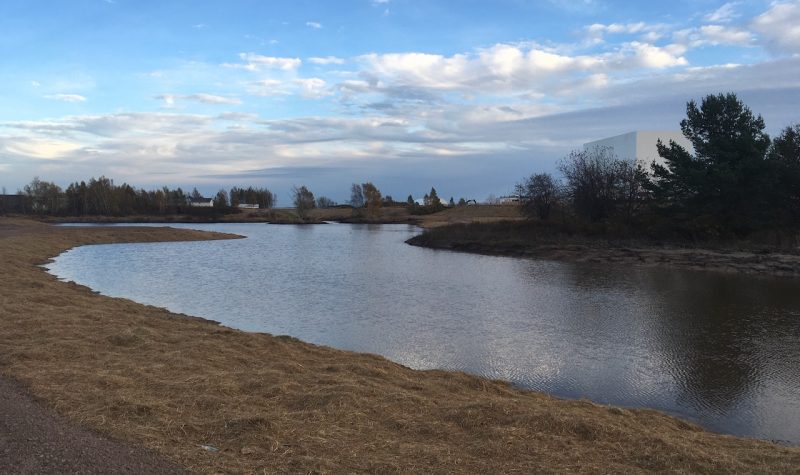If all goes well, the final phase of the Lorne Street Stormwater Mitigation project will be finished in December, according to town engineer Jon Eppell. But there’s still a question mark around an upgraded aboiteau to connect the system to the Tantramar River.
An aboiteau is a water control method which opens at low tide to allow farmland to drain into the sea, but closes at high tide to prevent salt water from backing up into the fields.
The aboiteau is provincially owned, and the price tag for the replacement has come in about $3 million, above the $2.4 million that the province has committed to the project back in May. And so Eppell says he is now waiting to hear back on whether the province will top up their funding.
Council got an update on the project at their monthly Committee of the Whole meeting on Monday. Eppell told council that the project could still be on schedule, and he hoped to have more to report at council next regular meeting on December 12. “If DTI [the department of transportation and infrastructure] gets the information to us so that we’re in a position to award at the December 12 meeting, we will still be on schedule,” said Eppell.
If the funding goes through, staff are recommending awarding the contract to Caldwell and Ross, which had the lowest bid on the project, at $2,855,750, well below the three other bids which all topped $4.5 million. With contracted engineering services added in, the cost to the province would total $3,041,750.
The project was designed and intended to be done over the winter, Eppell told council. “It’s actually easier to construct over the winter because the materials in the aboiteau will be frozen. And if we encounter some of our black peat material, hopefully it will be frozen too, and make it easier for us to dig through it.” The excavation of the Charles Street pond was more expensive than predicted due to unstable material encountered during digging.
In response to a question for local journalist Bruce Wark, Eppell explained that even without the aboiteau connected, the new flood control system could still deal with a major storm event, by temporarily storing massive amounts of water. “Once we get retention pond 3 [off Charles Street] connected to retention pond 2 [off St James Street], yes, we can handle a one-in-100 year storm,” said Eppell. “The difficulty that we have is discharging that water out into the river past the aboiteau.”
The planned aboiteau replacement will have a larger pipe at a lower elevation, as well as a secondary pipe at a higher elevation that will boost the capacity to empty water from the flood control system during low tides.
Before that replacement happens, there’s a contingency plan. “If it became a prolonged event, or if we had another event happen quickly on its heels, we would have to deploy a portable pump system,” said Eppell. Town staff have already set up an intake and concrete pad for the pump system, should it be needed.
In the meantime, work continues on the retention pond system. Originally slated for completion in mid December, Eppell said the date may get pushed by a week or two due to a delay in approval from CN to put a culvert underneath their railbed, officially connecting the two ponds. “Assuming that we can get that specialized subcontractor to come in to do the work in the next week or so,” said Eppell, “then I would expect us still to be 100% complete this December.”


